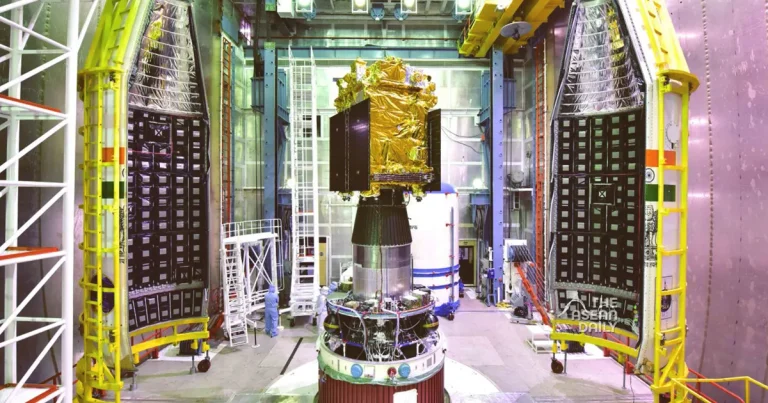31-8-203 (NEW DELHI) India is gearing up for its next ambitious space venture, Aditya-L1, a mission designed to study the sun and its impact on space weather. This mission follows closely on the heels of India’s historic landing of the Chandrayaan-3 spacecraft on the lunar south pole. Here’s an overview of India’s upcoming and notable past missions conducted by the Indian Space Research Organisation (ISRO):
ADITYA-L1:
Scheduled for launch on September 2, Aditya L1 is India’s maiden mission dedicated to studying the sun. The spacecraft will be positioned in orbit around Lagrange point 1 (L1) of the Sun-Earth system, approximately 1.5 million km (930,000 miles) from Earth. At this strategic location, gravitational forces from both celestial bodies balance, creating a stable environment, thus minimizing the spacecraft’s fuel consumption.
The mission’s primary objective is to monitor solar activities and their real-time impact on space weather.
In 2019, the Indian government allocated approximately $46 million for the Aditya-L1 mission; however, ISRO has not provided an official cost update.
GAGANYAAN:
India’s inaugural crewed space mission, Gaganyaan, intends to carry a crew of three astronauts to an orbit situated 400 km (250 miles) above Earth’s surface for a three-day mission, ultimately culminating in a water landing.
ISRO’s Vikram Sarabhai Space Centre has successfully tested systems for stabilizing the crew module and safely reducing its velocity during re-entry.
Earlier this year, it was disclosed that approximately 90.23 billion rupees ($1.08 billion) had been allocated for the Gaganyaan program.
While an official launch date has not been announced, ISRO anticipates that the mission will be ready for launch in 2024. After Gaganyaan, ISRO plans to concentrate on establishing a sustained human presence in space.
NASA-ISRO SAR (NISAR) SATELLITE:
The NASA-ISRO SAR (NISAR) satellite is a collaborative effort between NASA and ISRO.
Operating in a low-Earth orbit, NISAR will map the entire planet every 12 days, providing invaluable data for comprehending changes in ecosystems, ice mass, vegetation biomass, sea level rise, groundwater levels, and natural disasters such as earthquakes, tsunamis, volcanoes, and landslides.
Roughly the size of an SUV, the satellite is set to launch from India in the first quarter of the coming year, with a target launch window scheduled for January.
PAST MISSIONS:
- Chandrayaan-3: In August 2023, India achieved the remarkable feat of landing a craft safely in the moon’s south pole region. The mission is ongoing, with ISRO confirming the presence of sulphur, iron, oxygen, and other elements on the moon’s surface.
- Chandrayaan-2: Launched in 2019, this was India’s second moon mission, designed to explore the lunar south pole. While the orbiter successfully deployed, the lander met with an unfortunate crash.
- Mars Orbiter Mission (MOM): In 2013, ISRO became the fourth space agency to successfully place a spacecraft in Mars orbit. MOM, initially projected for a six-month mission, maintained contact with ground controllers until 2022.
- Chandrayaan-1: India’s inaugural moon mission took off in 2008. The satellite conducted over 3,400 orbits around the moon, confirming the presence of water ice. Communication with the spacecraft was lost on August 29, 2009, concluding the mission.




